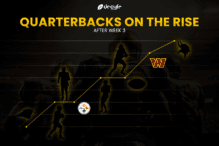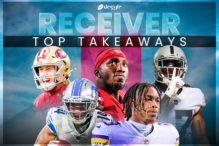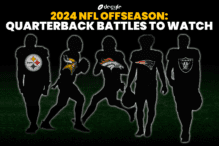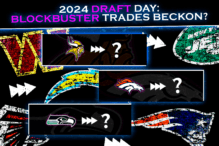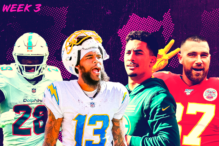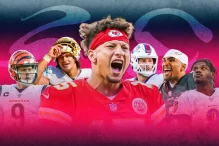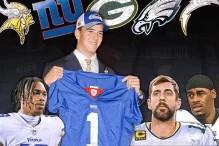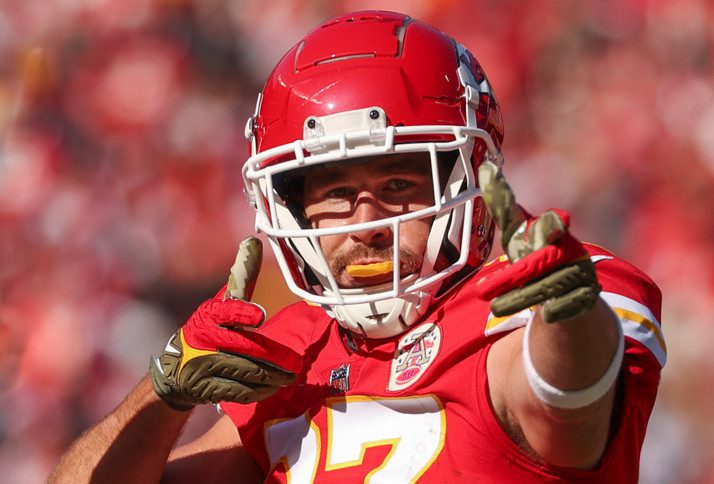

From Saquon Barkley to Josh Jacobs, running backs, and their contracts, have been one of the key talking points of the 2023 NFL offseason.
The short deals given to veterans such as Dalvin Cook and Ezekiel Elliott, players who were routinely selected Pro Bowls but are yet to turn 30, show the worth placed by front offices on running backs – a position previously crucial to a team’s success.
ICYMI: Former Dallas Cowboys running back Ezekiel Elliott has signed a one-year contract worth up to $6 million with the New England Patriots
(via @RapSheet & @TomPelissero)#Decyfr #NFL #ForeverNE pic.twitter.com/9dwOm2685M
— Decyfr Sport (@DecyfrSport) August 15, 2023
Now, as the quarterback is clearly the most important player on the field, teams no longer feel the need to hand out giant contracts to running backs when their production can be reproduced by a cheaper signing.
However, it’s not always been this way.
1906-1960 – The Development of NFL Offense
The NFL is currently based around the passing game, but when American Football was first played, it was centred around the run. The forward pass may have been legal in the sport since 1906, but a player didn’t end a season with over 1,000 passing yards until 1936 – after a rule change allowed forward passes to be thrown from anywhere behind the line of scrimmage.
But as teams began to pass the ball more frequently, offenses were still very much run-orientated, and when the Cleveland Browns’ Jim Brown began to dominate the league in the late 1950s, the running back position was still held in high regard.
And nothing changed as the league entered the Super Bowl era.
1961-2012 – The Golden Era
The NFL/AFL merger, and the introduction of the Super Bowl, shepherded in the golden age of running back play.
Hall of Famers such as Franco Harris, Earl Campbell, Walter Payton, Marcus Allen, and Eric Dickerson all starred in the ‘70s and ‘80s, winning either league or Super Bowl MVP honours. The position still boasted talented players in the ‘90s and 2000s, as Thurman Thomas, Emmitt Smith, Barry Sanders, Terrell Davis, Marshall Faulk, LaDainian Tomlinson and Adrian Peterson were all named NFL MVP – with running backs winning three of the four MVP Awards between the 1997 season and the 2000 season.
However, running backs’ control over awards season eventually came to an end. The Denver Broncos’ Terrell Davis was the last running back to be named Super Bowl MVP, winning the award in Super Bowl XXXII, while the Minnesota Vikings’ Adrian Peterson was the last running back (and non-QB) to be named league MVP following his efforts in the 2012 season.
2012-Present – The Decline
It wasn’t a dip in performance that contributed to the running back position’s decline, but more the league’s decision to enforce the rules.
After an incredibly physical AFC Championship Game in the 2003 playoffs, the NFL announced they would be cracking down on illegal contact between defenders and wide receivers before the 2004 season. This encouraged teams to increase their passing attempts and run the ball less, making a team’s success far more reliant on the quarterback and wide receivers, as opposed to the running back.
As rushing attempts decreased, running backs’ stats were destined to be impacted, and now, only six of the top 25 players in all-time rushing yards started their NFL careers after 1999 – Jamal Lewis, LeSean McCoy, Steven Jackson, LaDainian Tomlinson, Adrian Peterson, and Frank Gore. The Tennessee Titans’ Derrick Henry has the most career rushing yards among active players, with 8,335, but aged 29, is still over 10,000 yards behind the all-time leader, Emmitt Smith.
Also, now teams don’t necessarily need a strong ground game in order to guarantee playoff success.
While 16 of the last 23 running backs to lead the league in rushing made the playoffs that season, only three (Derrick Henry, LaDainian Tomlinson and Shaun Alexander) reached a Conference Champion Game, and just one (Shaun Alexander) appeared in a Super Bowl. The annual rushing yards leaders from the 1977 season to the 1999 season won more playoff games compared to their recent counterparts, and seven of the 23 reached a Conference Championship Game – plus, four went on to win a Super Bowl that year.
Of course, this has all affected how much money teams are willing to pay running backs. The San Francisco 49ers’ Christian McCaffrey is the highest-paid running back in the NFL this season, but he’s the 113th highest-paid player in the entire league, with 19 wide receivers earning more.
With a decline in production, success, and now even contract value, the harsh reality of the running back market is apparent. No one knows what the future will hold, but as the passing game continues to reign over NFL offenses, running backs’ fortunes show no signs of improving.
https://decyfrsport.com/the-history-of-the-running-back-position/
Copied!
















